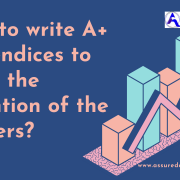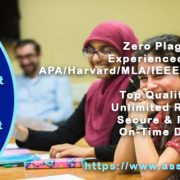Unit Code: MMM240
Unit Name: Organisational Behaviour
Exam Name: Open-book Take-Home Online Exam
Maximum Word Count: 2,000 words
Anticipated writing time: TWO (2) HOURS
Special instructions for Candidates:
- This examination is OPEN BOOK.
- This examination is open for 24 HOURS. Within this period, you can select when you complete the exam.
- This examination constitutes 50% of your assessment in this unit.
- This examination comprises 4 You are required to answer ALL 4 questions.
- Save your exam response on your computer using the file name: student ID, unit code and the unit name, for example: 216123123_MMM240_Organisational behaviour
- You must type your responses into a single Word document and upload the .docx to the End of Unit Assessment Submission Dropbox on the CloudDeakin unit site. Number each question clearly.
- Late submissions will not be marked.
- Remember to save your work regularly.
- It is important that you complete this task individually. Your submission will be reviewed for the purposes of detecting collusion and/or plagiarism.
- If you encounter any technical issues with CloudDeakin, please contact the IT Service Desk online or via phone (1800 463 888; +61 5227 8888 if calling from outside Australia) and record your ticket number as evidence of technical issues during the examination period.
- In the unlikely event that you cannot upload your completed exam paper, email it as an attachment to your unit chair (mbc@edu.au) within the submission time.
- The breakdown of marks in this exam is:
|
Question |
Marks |
| 1 | 15 |
| 2 | 10 |
| 3 | 15 |
| 4 | 10 |
| Total Available Marks | 50 |
All candidates MUST complete this section
Type your student ID number here: __________222100511_______________________
MMM240 Organisational Behaviour
Question 1. Answer all parts of this question. (15 marks, 600 words in total)
The global pandemic has had a significant impact on the the Australian workplaces in various ways.
1a. How have globalization, workforce diversity and changing employment relationships had an impact on, or been affected by, the pandemic?
(5 marks, maximum of 200 words)
(Please type your response here)
1b. Drawing on your understanding of Organisational Behaviour, identify a specific theory/framework for one (1) of these three areas (globalization, workforce diversity or changing employment relationships) and describe and explain how it might be applied to improve or enhance people management in the workplace moving beyond the pandemic.
(10 marks, maximum of 400 words)
(Please type your response here)
Question 2. Answer all parts of this question. (10 marks, 400 words in total)
In discussing your Organisational Behaviour studies with your manager, you tell them about [a theory/model] that particularly interested you. In response they tell you how they recall hearing about the application of the [theory/framework] at a senior management conference they recently attended. Your manager thinks for a while, then asks you: “What insights can we gain from [that theory/model] to apply to our workplace?”
For one (1 only) of the following topics, choose a theory/model/concept to fit into the above scenario.
Topics list:
Topic 4: Employee Motivation and Applied Performance Practices
Topic 7: Power and Influence; Conflict and Negotiation in the Workplace
Topic 9: Organisational Culture
Discuss how you would respond to your manager’s request for how the theory/model/concept you have chosen could provide insights for the organisation. In your response, ensure you include the following:
- describe and critique the theory/model (e.g., strengths and weaknesses) that you chose;
- compare and contrast the theory/model with another theory/model/concept from the same topic;
- evaluate the usefulness of the theory/model within an organisation of your choice; and
- draw on at least one assigned journal article (from the weekly reading list) to support your arguments.
(10 marks, maximum of 400 words)
(Please type your response here)
Question 3. Answer all parts of this question. (15 marks, 600 words in total)
You are the Human Resources Manager of a large residential house building company. Recent events in the economy and market are putting a huge strain on the industry, with many of your competitors entering administration. The CEO of your firm wants everyone to support the organisation’s shift toward a culture that expresses the values of lean efficiency and hard work as this is what will enable the company’s survival. The CEO has introduced a new reward system to reinforce this culture and personally interviews all trade and managerial applicants to ensure that they bring similar values to the organisation. Some employees who criticised these values had their careers sidelined until they left. Two mid-level managers were fired for supporting contrary values, such as promoting work–life balance.
3a. Based on your knowledge of organisational subcultures, what potential problems is the CEO creating?
(5 marks, maximum of 200 words)
(Please type your response here)
3b. Explain which aspects of organisational culture you might develop to support increased efficiency and hard work in the company, and why.
(5 marks, maximum of 200 words)
(Please type your response here)
3c. Using examples, explain how you would work to bring about organisational change (including dealing with potential resistance).
(5 marks, maximum of 200 words)
(Please type your response here)
Question 4. Answer all parts of this question. (10 marks, 400 words in total)
Your best friend, Danielle, graduated from Deakin at the end of last year with a Teaching degree. In February, she started working at a public high school that was her preferred choice due to its size and location close to her home. Now that you are both working, you haven’t been able to catch up as often as you did while studying. However, when you do get to talk, she has always been cheerful about her job and the people they work with – until last week.
“I need your advice,” Danielle said. “I don’t know what to do”. She went on to explain that she had noticed several times in the past month that other teachers would stop talking when she came into the room, or she would see a couple of them look over at her from the other end of the corridor and then laugh. She tried asking a few people what was going on, but most of them said it was just her imagination. Another teacher (who had also started at the school this year) said she had noticed it too but didn’t know what was being said.
“I want to get to the bottom of it, so I can get back to enjoying the job. The way I am feeling now, I think I’d be better looking for another job, but I don’t really want to leave”, Danielle said with a sigh.
Drawing particularly from Topic 7 (Power and Influence; Conflict and Negotiation in the Workplace), discuss what advice you would give your friend to address this situation.
In your response:
- describe what source/s of power your friend may have (2 marks, maximum of 100 words);
- explain one (1) influence tactic that would be suitable for her to use (and why) (4 marks, maximum of 150 words); and
- explain one (1) influence tactic that would NOT be suitable to use (and why not). (4 marks, maximum of 150 words).
(10 marks, maximum of 400 words)
(Please type your response here)
– END OF ASSESSMENT –










